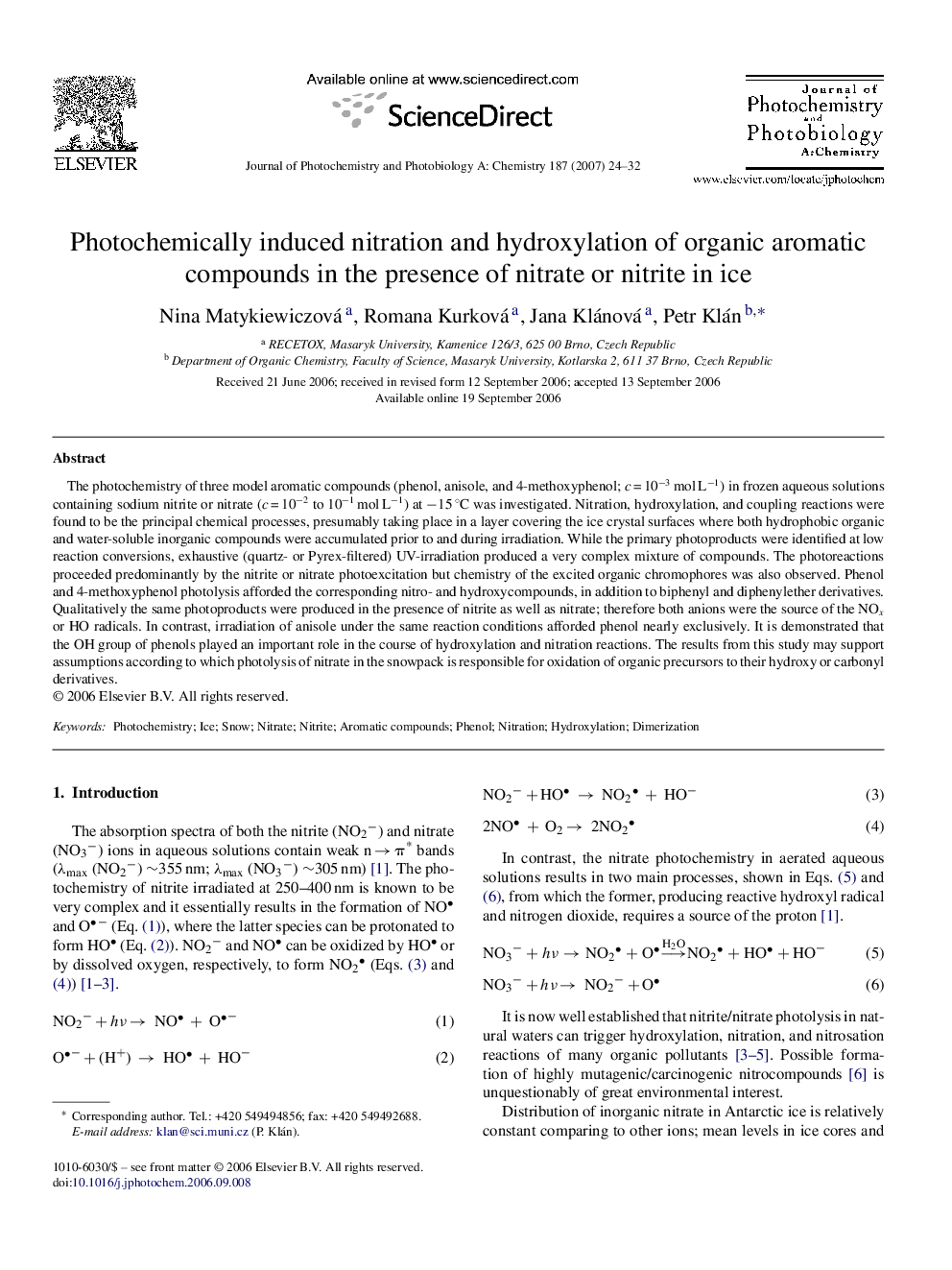| Article ID | Journal | Published Year | Pages | File Type |
|---|---|---|---|---|
| 29323 | Journal of Photochemistry and Photobiology A: Chemistry | 2007 | 9 Pages |
The photochemistry of three model aromatic compounds (phenol, anisole, and 4-methoxyphenol; c = 10−3 mol L−1) in frozen aqueous solutions containing sodium nitrite or nitrate (c = 10−2 to 10−1 mol L−1) at −15 °C was investigated. Nitration, hydroxylation, and coupling reactions were found to be the principal chemical processes, presumably taking place in a layer covering the ice crystal surfaces where both hydrophobic organic and water-soluble inorganic compounds were accumulated prior to and during irradiation. While the primary photoproducts were identified at low reaction conversions, exhaustive (quartz- or Pyrex-filtered) UV-irradiation produced a very complex mixture of compounds. The photoreactions proceeded predominantly by the nitrite or nitrate photoexcitation but chemistry of the excited organic chromophores was also observed. Phenol and 4-methoxyphenol photolysis afforded the corresponding nitro- and hydroxycompounds, in addition to biphenyl and diphenylether derivatives. Qualitatively the same photoproducts were produced in the presence of nitrite as well as nitrate; therefore both anions were the source of the NOx or HO radicals. In contrast, irradiation of anisole under the same reaction conditions afforded phenol nearly exclusively. It is demonstrated that the OH group of phenols played an important role in the course of hydroxylation and nitration reactions. The results from this study may support assumptions according to which photolysis of nitrate in the snowpack is responsible for oxidation of organic precursors to their hydroxy or carbonyl derivatives.
